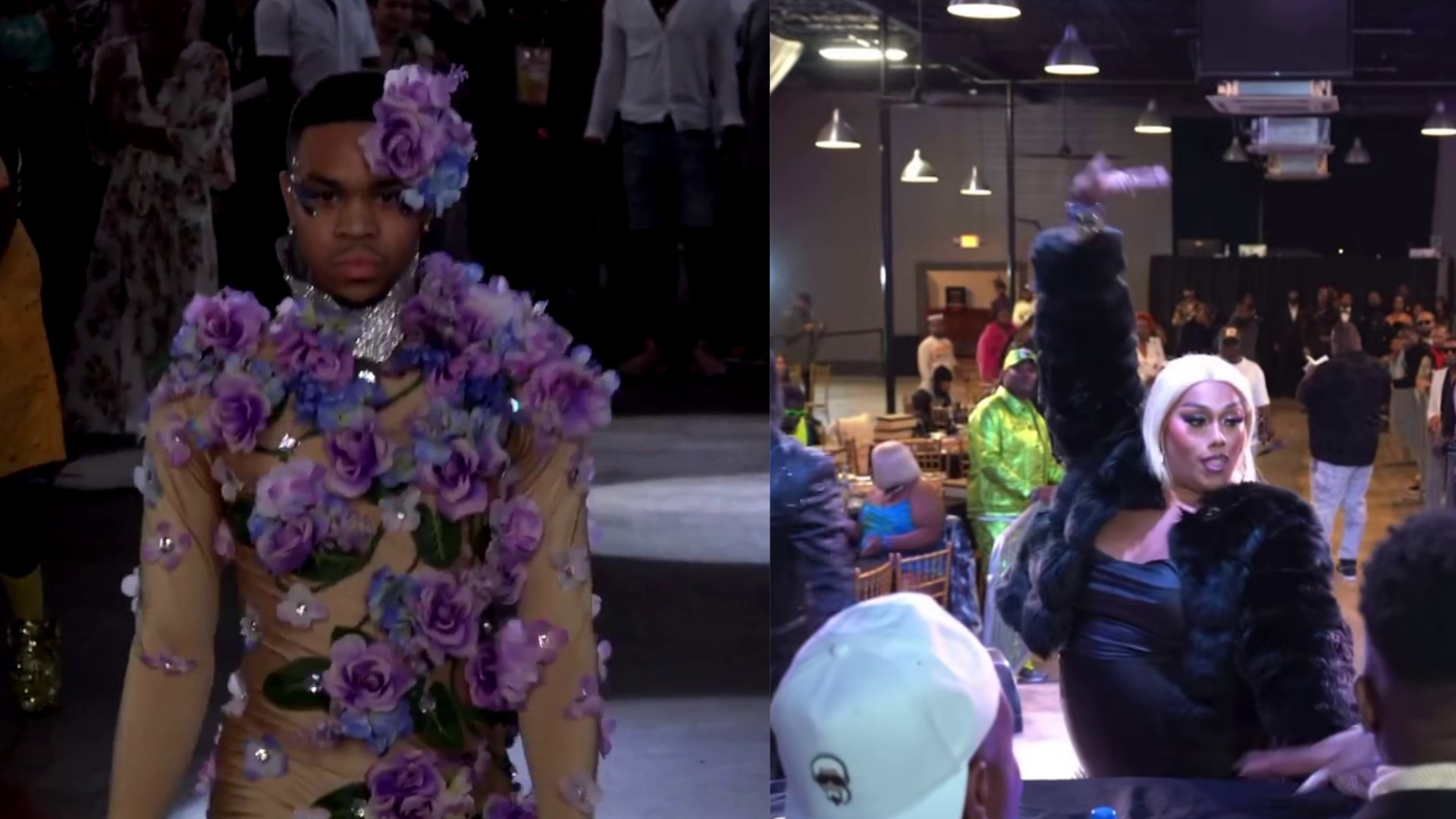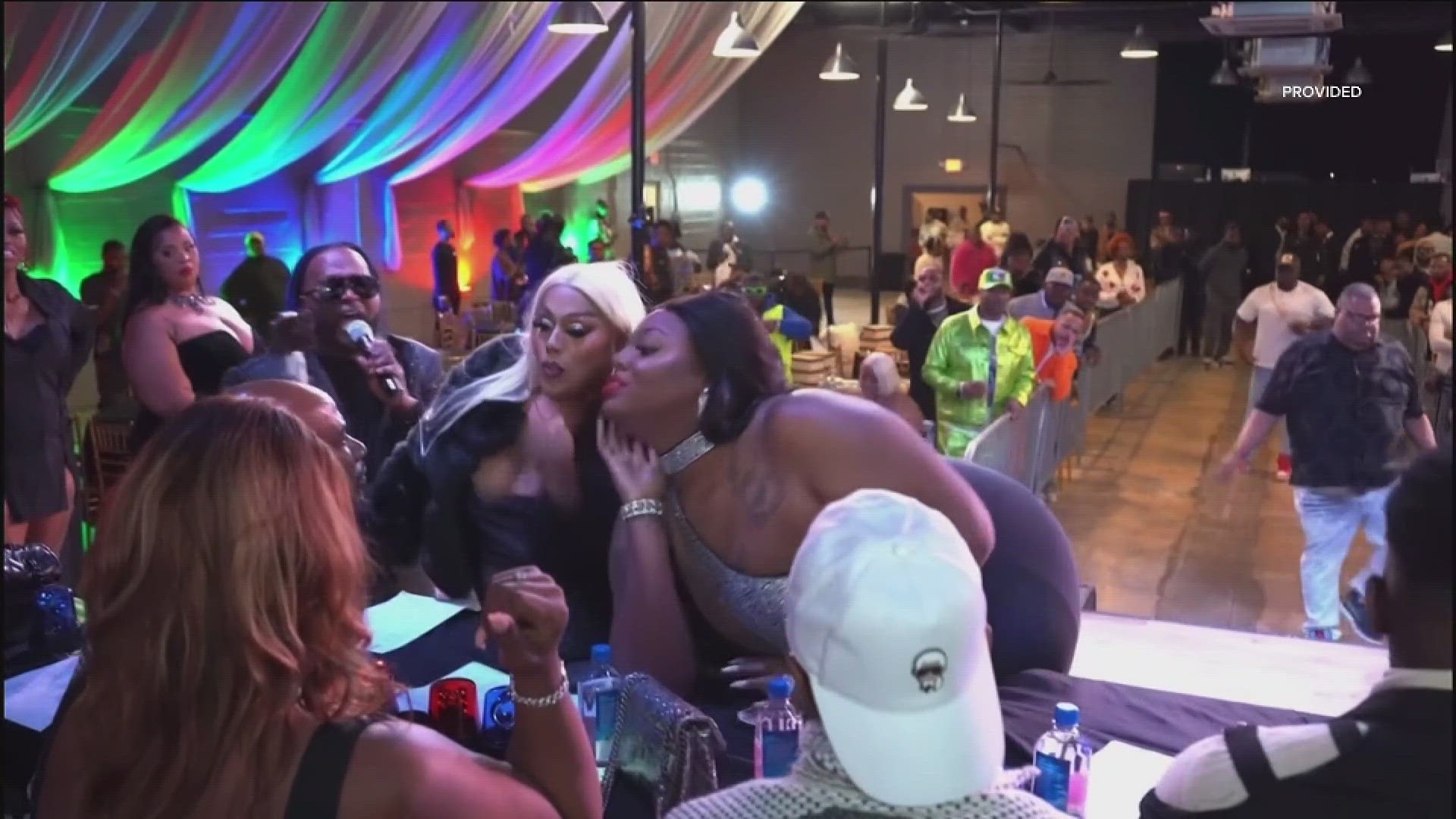Atlanta LGBTQ Ballroom performers strut for visibility
Black LGBTQ community members seek to empower others to be themselves.

A new generation in Atlanta is making its own modern history by continuing the legacy of late civil rights heroes and freedom fighters.
Black LGBTQ+ community members are strutting for visibility as they break barriers and build communities, empowering more generations to be boldly themselves.
“When we talk about history, we often forget Black queer people; that’s our history too,” said Legendary Muva Pink Louboutin, a member of the House of Louboutin Atlanta Chapter.
To dream and to disrupt is Black Atlanta’s bold movement, which is how Black Atlanta Ballroom dancers and performers embody their history.
"Black queer liberation is Black liberation. I feel like when it comes to the Ballroom space, Ballroom has always been political. Queer people's existence is political and so Black. Queer people, advocating not only for themselves but the community at large," said Miss Bleu Louboutin, who is a cis-gendered Black woman who performs in the culture.
Although shows like "P-Valley" and "Pose," or even Beyoncé's "Renaissance," have highly popularized the culture, local community members want people to know that the culture is here to stay as members have actively contributed to fighting for important issues in the Black and Trans community.
11Alive spoke with several members of the culture based in Atlanta who believe their community deserves visibility during Black History Month and beyond.
Stepping into Ballroom culture
Members of the House of Louboutin’s Atlanta Chapter Kiki scene perform in the essence of those who walked in balls before them with pride. The House of Louboutin started as a fashion house and is internationally renowned. Members of the Atlanta chapter are a part of the Kiki Ballroom scene--- which incorporates many younger members of the community.
The house in the ballroom scene is a group of families created not by blood but in love and culture. A house competes together as a unit in balls — which has evolved from drag balls, according to the John Hopkins Sheridan Libraries.
“It’s more than just a strut; It’s more than just a segment of the face; It’s more than just the glam. Like, it’s for us by us for people to be educated on why it was created,” said Legendary Muva Pink Louboutin.
The Ballroom scene is an expressive culture where Black and Latine LGBTQ+ community members perform, dance, vogue, model and “serve face” in an underground community. According to the National Library of Medicine, Ballroom started in Harlem, New York, in the 1970s but later expanded to cities like Atlanta.
Contemporary Ballroom culture shown today has been around since the 1970s, born by Crystal LaBeija after speaking out about the anti-Black bias of drag competitions, according to the Peabody Ballroom Experience. However, early forms of Ballroom culture, called drag balls, began to appear in the late 1920s and 1930s and were often ridiculed for expressing their culture.
Historically, transgender and queer community members have heavily represented the scene. However, all genders are welcomed.
Throughout history, it has gained a reputation for providing a system of support and a home to individuals who often face rejection from their biological and born homes because of their sexual orientation or gender identity.
“We are on the forefront of Black issues because Black issues are our issues. And so, when we’re talking about civil and human rights, when we’re talking about trans rights, when we’re talking about voting advocacy, when we talk about the HIV epidemic,” Legendary Muva Pink Louboutin said they're on the frontlines advocating.
Ballroom 'speaking truth to power' in HIV/AIDS education
A study from the National Library of Medicine in the early 2000s highlights how the Ballroom culture has raised awareness and constantly educated youth amidst the HIV epidemic in the early 90s.
Current Ballroom and house members are still advocating for youth as they encourage community members to consider HIV/AIDS prep medications and educate them on knowing their status.
When 11Alive spoke to members of the House of Louboutin, we visited NAESM — a nonprofit organization aimed at providing a space for Black gay men and queer people, a community for health and wellness. One member told 11Alive that the nonprofit also helps with education.
Legendary Princess Louboutin stressed the importance of “speaking truth to power” with the epidemic and having important conversations about the virus.
“We are on the forefront of these issues, not just because we are Black, but because of the intersections of our identity,” said Legendary Princess Louboutin, also a House of Louboutin Atlanta Chapter member.
Besides the HIV epidemic, members of the Ballroom community have constantly fought for transgender and gender identity rights, voting rights and more.
Icons walked before Ballroom members of today, often fighting for a place for them to belong as society often cast them out.
Legendary Muva Toni Louboutin mentioned Tracey “Africa” Norman, Octavia Saint Laurent and others.
According to a 2016 report from The Cut, Norman is the first Black transgender model during the late 70s and early 80s. According to The Cut, she also performed in the Ballroom, becoming a mother for the “House of Africa.”
Check the timeline below to learn more about key moments in history that represented the Ballroom culture.
A Brave Space
“Ten, ten, ten across the board,” Beyoncé sang in her recent hit “Heated” on her GRAMMY-Award-winning album “Renaissance.”
Despite the deep-rooted history in the Ballroom scene, the culture gives members a “brave space” to be bold, be Black and serve face, expressing themselves beyond creative measures.
Vinchí Givance, from Mobile, Alabama, got pulled into the Ballroom scene in 2022.
He walks in the face category — which is centered on elements of the face, including attitude and structure. Givance started walking balls in February last year, received his first “No,” and things did not go well, but he kept trying, eventually winning the cash prize months down the line, describing it as “full circle," he said.
“I really wanted to walk face, you know, and it was something that I felt in my spirit because I have always been told that I have a very nice and handsome face. A very modest face,” said Givance.
He said participating in balls gave him a new form of expression and freedom to be himself.
“I felt like that specifically being able to go to the bars and express yourself with some level of freedom and liberation, which is what I also feel like Black history is about,” he said. “With every step of everything we’ve done, it’s more freedom, more liberation, more opportunity, more power, more knowledge. That’s the only thing that separates us from any other culture. We can do it all.”
For House of Louboutin’s Legendary Muva Pink Louboutin, who is another house mother in the culture, she was kicked out of her Chicago home in 2016 for how she identified.
“I had to find somewhere to go,” she said.
She then found her first chosen mother, who took her in under her wing and was very involved in the Ballroom scene.
Legendary Muva Pink Louboutin said that when she began doing community work at a drop-in center in Chicago, she was encouraged to participate.
That was the beginning of her newfound family.
“It gives me a source of sisterhood and motherhood, that’s where I found my passion,” she said. “I may not necessarily have had that growing up for myself, but if I can be a part of somebody’s dreams and making those dreams - that’s a reality.”
A House mother, also spelled as "Muva," embodies grace and supports her “children” and other group members. She also makes sure they are ready to perform.
Legendary Muva Toni Louboutin, also known as Toni Bryce, is one of the founding leaders of the Atlanta Kiki scene — which started in 2017. She describes the house mother as the “backbone” of the group.
As Legendary Muva Toni Louboutin and Legendary Muva Pink Louboutin get their children ready to perform, they both stress the importance of being authentically in the space.
“It’s a brave space because it’s a space where you get to show up as your authentic self and be you. And even if you’re met with, you know, maybe not some inclusiveness, you can still show up and be you in terms of like the competition,” said Legendary Muva Toni Louboutin.
Serving Legacies
“Ballroom has been here for as long as it’s been here and is going to continue to be here,” said Miss Bleu Louboutin.
Members who have been performing in the community for a while have said the culture has since evolved from what it used to be in the 20th century.
Before, the culture did not have cash prizes and was mostly underground, but now, with its expansion and popularization in shows, the culture is growing.
Legendary Muva Toni Louboutin believes that genuinely reaching out to those in the Ballroom and asking questions helps keep the culture alive. Other members, like Legendary Princess Louboutin, also believe that allowing the community to tell their own stories by documenting and filming helps keep the authenticity alive in the community.
Education still plays a role.
Legendary Muva Pink Louboutin believes schools should talk about Ballroom history to educate the youth and more people about the queer community and the biases associated with it.
“The real world only sees the part of borrowing, which is vogue, and they see the glamor behind Ballroom - but they don’t know about the struggles. They don’t know what Ballroom was founded upon. They don’t know that our trans sisters were literally creating spaces for us,” she added.
To be in a Ballroom house, community members must actively pull new members into the community, but those seeking can start asking actual community members about joining. Community members ask that those interested or even spectating respect the space and each other.
Featured Performers
Here are all of the Ballroom performers that were featured in this piece.


